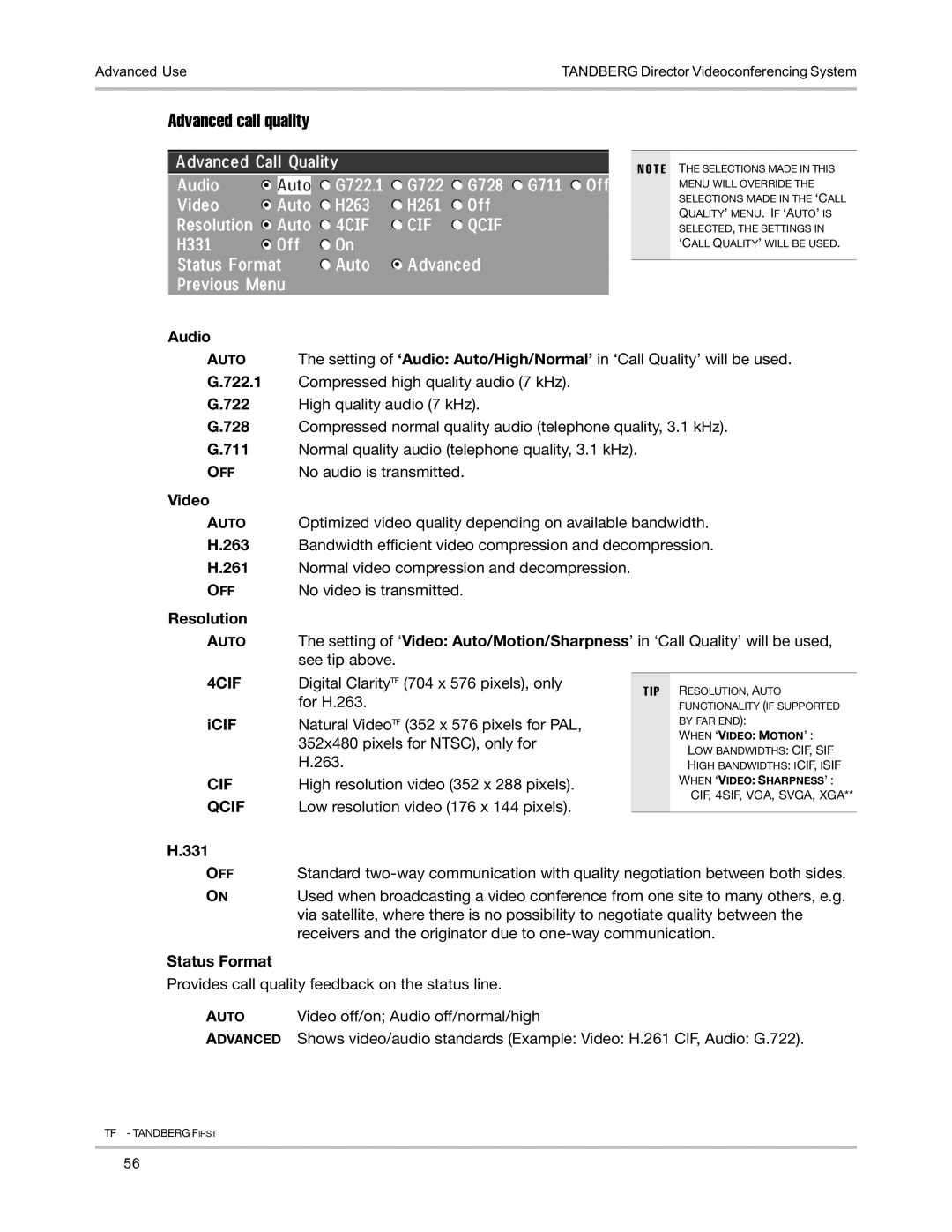
Advanced Use | TANDBERG Director Videoconferencing System |
|
|
Advanced call quality
N O T E
THE SELECTIONS MADE IN THIS
MENU WILL OVERRIDE THE
SELECTIONS MADE IN THE ‘CALL
QUALITY’ MENU. IF ‘AUTO’ IS
SELECTED, THE SETTINGS IN
‘CALL QUALITY’ WILL BE USED.
Audio |
|
AUTO | The setting of ‘Audio: Auto/High/Normal’ in ‘Call Quality’ will be used. |
G.722.1 | Compressed high quality audio (7 kHz). |
G.722 | High quality audio (7 kHz). |
G.728 | Compressed normal quality audio (telephone quality, 3.1 kHz). |
G.711 | Normal quality audio (telephone quality, 3.1 kHz). |
OFF | No audio is transmitted. |
Video |
|
AUTO | Optimized video quality depending on available bandwidth. |
H.263 | Bandwidth efficient video compression and decompression. |
H.261 | Normal video compression and decompression. |
OFF | No video is transmitted. |
Resolution
AUTO The setting of ‘Video: Auto/Motion/Sharpness’ in ‘Call Quality’ will be used, see tip above.
4CIF | Digital ClarityTF (704 x 576 pixels), only | T I P | RESOLUTION, AUTO |
| for H.263. | ||
|
| FUNCTIONALITY (IF SUPPORTED | |
iCIF | Natural VideoTF (352 x 576 pixels for PAL, |
| BY FAR END): |
| 352x480 pixels for NTSC), only for |
| WHEN ‘VIDEO: MOTION’ : |
|
| LOW BANDWIDTHS: CIF, SIF | |
| H.263. |
| |
|
| HIGH BANDWIDTHS: ICIF, ISIF | |
CIF | High resolution video (352 x 288 pixels). |
| WHEN ‘VIDEO: SHARPNESS’ : |
QCIF | Low resolution video (176 x 144 pixels). |
| CIF, 4SIF, VGA, SVGA, XGA** |
|
| ||
H.331 |
|
|
|
OFF | Standard | ||
ON | Used when broadcasting a video conference from one site to many others, e.g. | ||
| via satellite, where there is no possibility to negotiate quality between the | ||
| receivers and the originator due to | ||
Status Format
Provides call quality feedback on the status line.
AUTO Video off/on; Audio off/normal/high
ADVANCED Shows video/audio standards (Example: Video: H.261 CIF, Audio: G.722).
TF - TANDBERG FIRST
56
